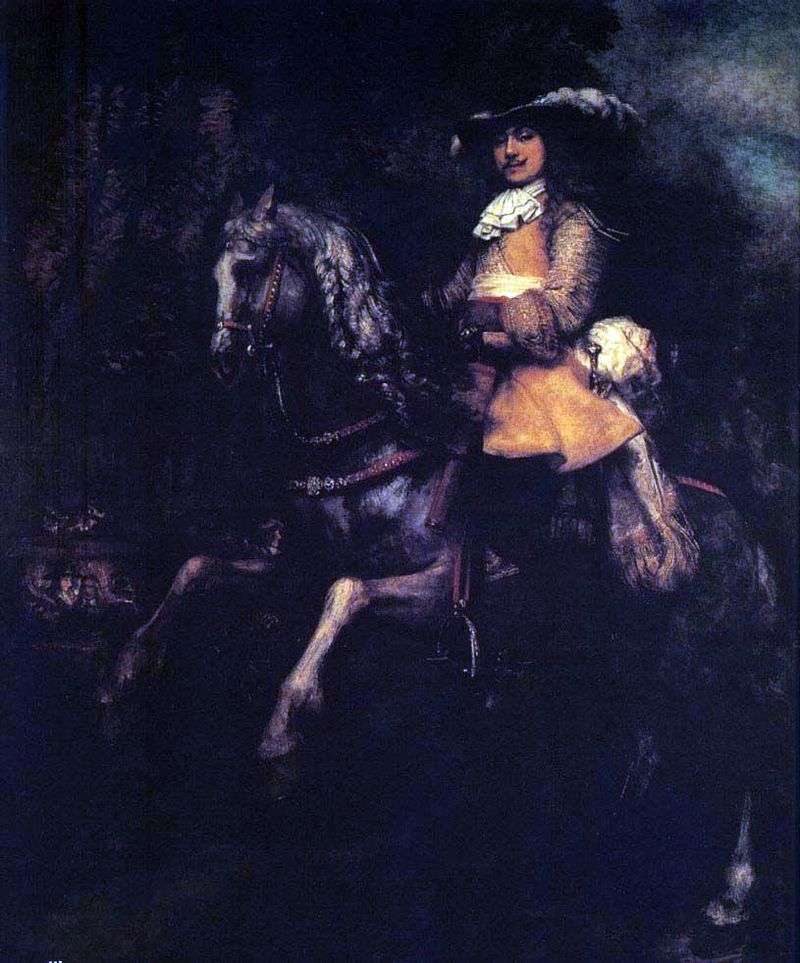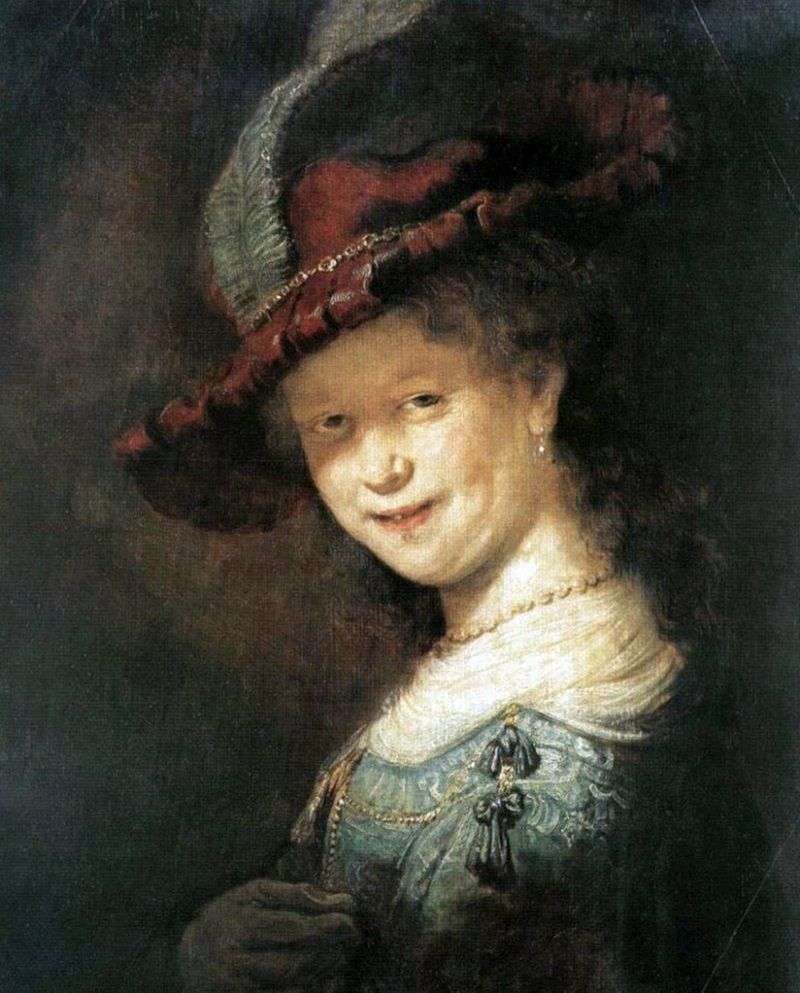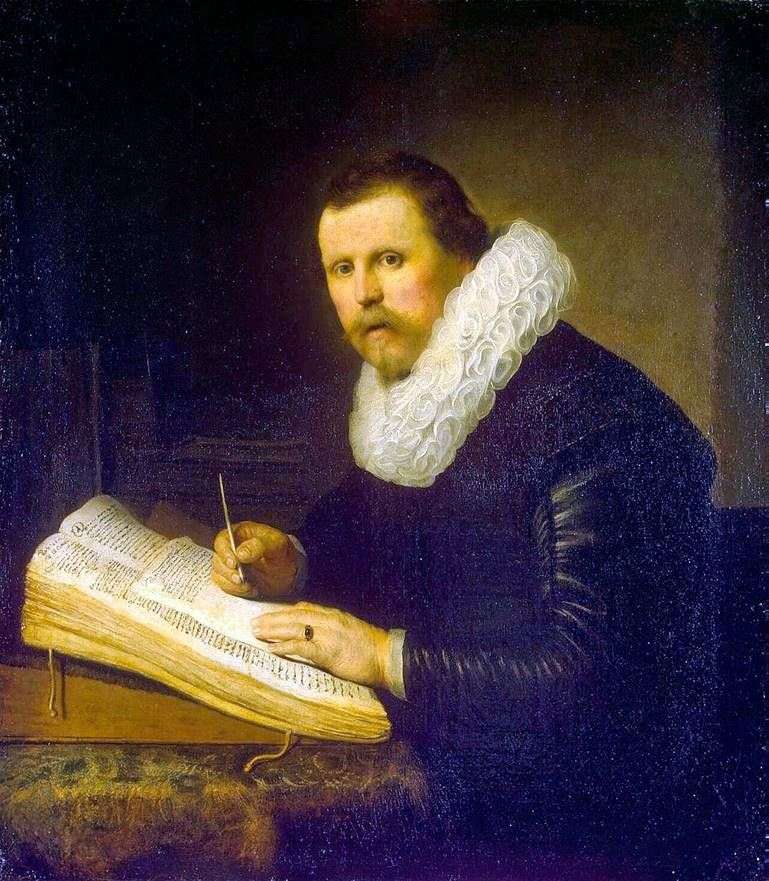
Self-portrait was written by the Dutch artist Rembrandt van Rijn at the age of 59 years. The size of the picture is 91 x 77 cm, oil on canvas. Full name of the painting “Self-portrait of Rembrandt van Rijn in the image of the Apostle Paul.” Rembrandt’s image of himself, often repeated and transformed, always going in depth, it is, as was once said, the whole autobiography in visual form, “the only one for all mankind.”
The only time in history in these pictures are embodied the formation of the personality, the growth of individuality. Before us is a human document that has no equal. But such unprecedentedness should not overshadow the view on the concrete, special, since this is the most important thing. It is about the autobiography of the artist of a certain historical era and a certain country. We are talking about the image of himself in a particular social position. Late self-portraits of the 60s do not leave the slightest doubt that none of them gives a clear idea of Rembrandt, only their ensemble combines contrasts with a sketch of a person, a person with his contradictions.
All self-portraits express in their own way the actual attitude towards time and life, their contrasts and contradictions reflect the previously known contradictions of human existence, and only later self-portraits with an ever-increasing force appear understood antagonism between social being and the individual aspirations of a single artist. The rise of oneself as a means of self-defense and, at the same time, as the only possible means of protecting art and artists in general.
They proclaim Rembrandt’s self-assertion towards a society in which the artist’s statements to the future, his ideas about humanity “with a pure heart,” have no basis. This explains the monumental transformation of the artist’s own “I” up to the tragic magnitude, which seeks a measure of evaluation only in itself and justifies the “unconscious, but monstrous egoism” of a genius in artistic form.
For example, in Cologne’s self-portrait, Rembrandt consciously appears to us next to the bust of the ancient Roman term bot, the sovereign of frontiers and time. Before this allegory of death, which no one can avoid, the artist repulses time, peace and his own chosen destiny – with an incomprehensible and secretive grin, with obvious mockery, with triumphant serenity and irony, illuminated by the “golden glow of fading afternoon light.” “Sculpture by Termbrandt contrasts his mature pictorial perfection in mastering paint and light, the symbol of death is a brushstroke swirling with life and his calm philosophical smile.
This late self-portrait of Rembrandt proclaims in the most intimate way the old motto of the Term – “I do not retreat before anyone.” Rembrandt’s late painting brings the subject of her image to such a scale of self-expression that the conception of human dialectics contained in it makes us eventually forget about the very motivation of paintings, portraits and self portraits of the great painter.
 Portrait of an Old Man in Red by Rembrandt Harmens Van Rhine
Portrait of an Old Man in Red by Rembrandt Harmens Van Rhine Portrait of an Old Woman by Rembrandt Harmens Van Rhine
Portrait of an Old Woman by Rembrandt Harmens Van Rhine Portrait of Maria Trip by Rembrandt Harmens Van Rhine
Portrait of Maria Trip by Rembrandt Harmens Van Rhine Self-portrait at the age of 54 by Rembrandt Harmens Van Rhine
Self-portrait at the age of 54 by Rembrandt Harmens Van Rhine Frederick Riel on horseback by Rembrandt Harmens Van Rhine
Frederick Riel on horseback by Rembrandt Harmens Van Rhine Portrait of Saskia van Eilebürch by Rembrandt Harmens Van Rhine
Portrait of Saskia van Eilebürch by Rembrandt Harmens Van Rhine Self Portrait at Work by Rembrandt Harmens Van Rhine
Self Portrait at Work by Rembrandt Harmens Van Rhine Portrait of a Scientist by Rembrandt Harmens Van Rhine
Portrait of a Scientist by Rembrandt Harmens Van Rhine